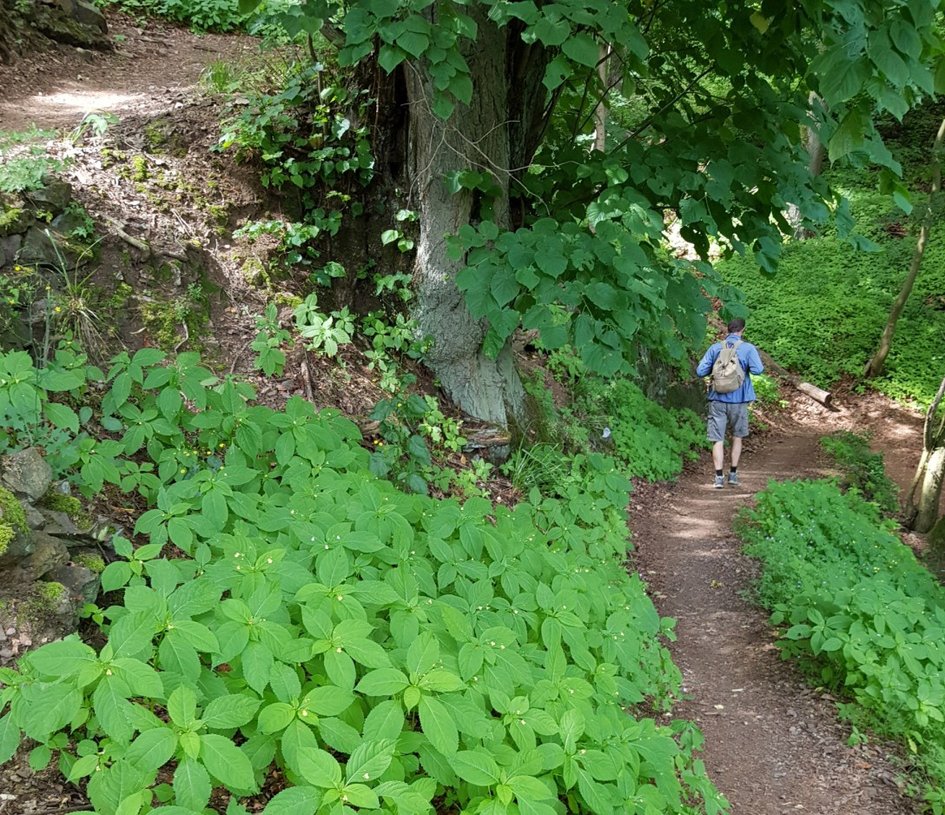As hiking has become more attractive as a leisure activity, the demands on public transport and route design have also increased. This is shown by the latest ‘Wandermonitor 2024’ hiking study from the Hiking Research Working Group of the Institute for Tourism and Regional Research at Ostfalia University of Applied Sciences.
"Among the German population, the demand for hiking as a leisure and holiday activity shows an unbroken growth trend," explains the scientific director of the survey, Prof. Dr. Heinz-Dieter Quack. Among the more than 1,100 people surveyed, the intensity of hiking, which has been high for years, has increased once again compared to the previous year (66 percent) with a 67.5 percent share of frequent hikers and is well above the level before the pandemic (53 percent).
The team's year-round survey also shows that almost two thirds of hikers prefer a low mountain range landscape and often choose a route of between 5 and 15 kilometres for their hikes.
Almost two thirds are generally prepared to travel to and from the destination by public transport. For almost 30 percent, the ‘Deutschlandticket’ has provided a positive stimulus. However, according to the ‘Wandermonitor 2024’, the actual frequency of use is significantly lower and a third of respondents are clearly against travelling to and from the destination by public transport. A lack of flexibility and dependency, inadequate connections to hiking trails and a high time expenditure are cited as obstacles. "Above all, the general connection, the frequency of connections, costs and punctuality must be improved in order to increase the use of public transport by hikers," says Prof. Dr. Heinz-Dieter Quack. The limits of acceptable frequency are one hour; only a few respondents would accept less frequent connections. The distance from the bus stop to the hiking trail and the signposting there and back are also very important.
As in previous years, the most important motives for hiking are "experiencing nature" (97 percent) and "getting exercise/being active" (91 percent). "The outstanding importance of hiking as a leisure activity is associated with increasingly growing demands: An appealing landscape, easy access to the starting point, beautiful views and high-quality signposting are almost basic requirements for the majority. The ideal hiking trail is a rather narrow path, but with an exposed location. When it comes to views, panoramic views are particularly popular," says hiking expert Quack.
The survey also shows that even in times of AI and seamless digitalisation, more than three quarters of respondents still prefer hiking signs - especially at crossroads - when it comes to route guidance. Overall, signposting and information are the third most important quality features for hiking regions, just behind naturalness and scenery.
The results of the ‘Wandermonitor 2024’ also mark the start of the ‘Wandermonitor 2025’, which aims to provide an up-to-date survey of the added value generated by hikers in the respective region, along with many other points. Numerous tourism associations, companies and organisations have already registered as partners at www.wandermonitor.de (external link, opens in a new window). More are welcome at any time. Hikers can take part in the survey at https://www.unipark.de/uc/wandermonitor/ (external link, opens in a new window).
More about the hiking study ‘Wandermonitor 2024’
The answers to the questionnaires are collected in co-operation with more than 50 tourism associations and companies from all over Germany. The aim of this Germany-wide hiking monitoring is to collect meaningful visitor data to characterise hiking tourism in order to continuously improve the hiking tourism offer and adapt it to constantly changing needs. The focus is on recording the demographic visitor profiles, the characteristics of the hikes and an annually changing focus topic on the hiking tourism offer. With the ‘Wandermonitor’, Ostfalia wants to bring together science and practice and pool the resources of both sides. Hiking destinations receive reliable figures in order to be able to adapt the hiking tourism offer in the regions on the one hand and to organise their marketing to suit the target group on the other. You can find more information here: www.wandermonitor.de
Your contact for this topic:
The scientific management of the ‘Wandermonitor’ is the responsibility of hiking expert Prof. Dr. Heinz-Dieter Quack. If you are interested, please contact him and his research team at wanderforschung(at)ostfalia.de (opens your email program)

